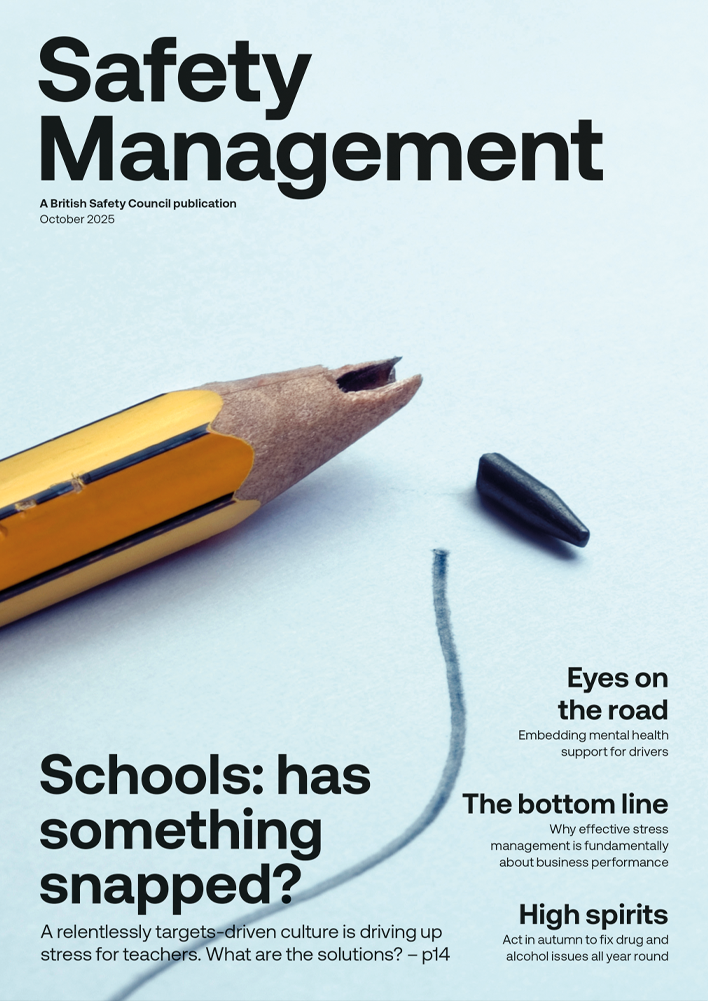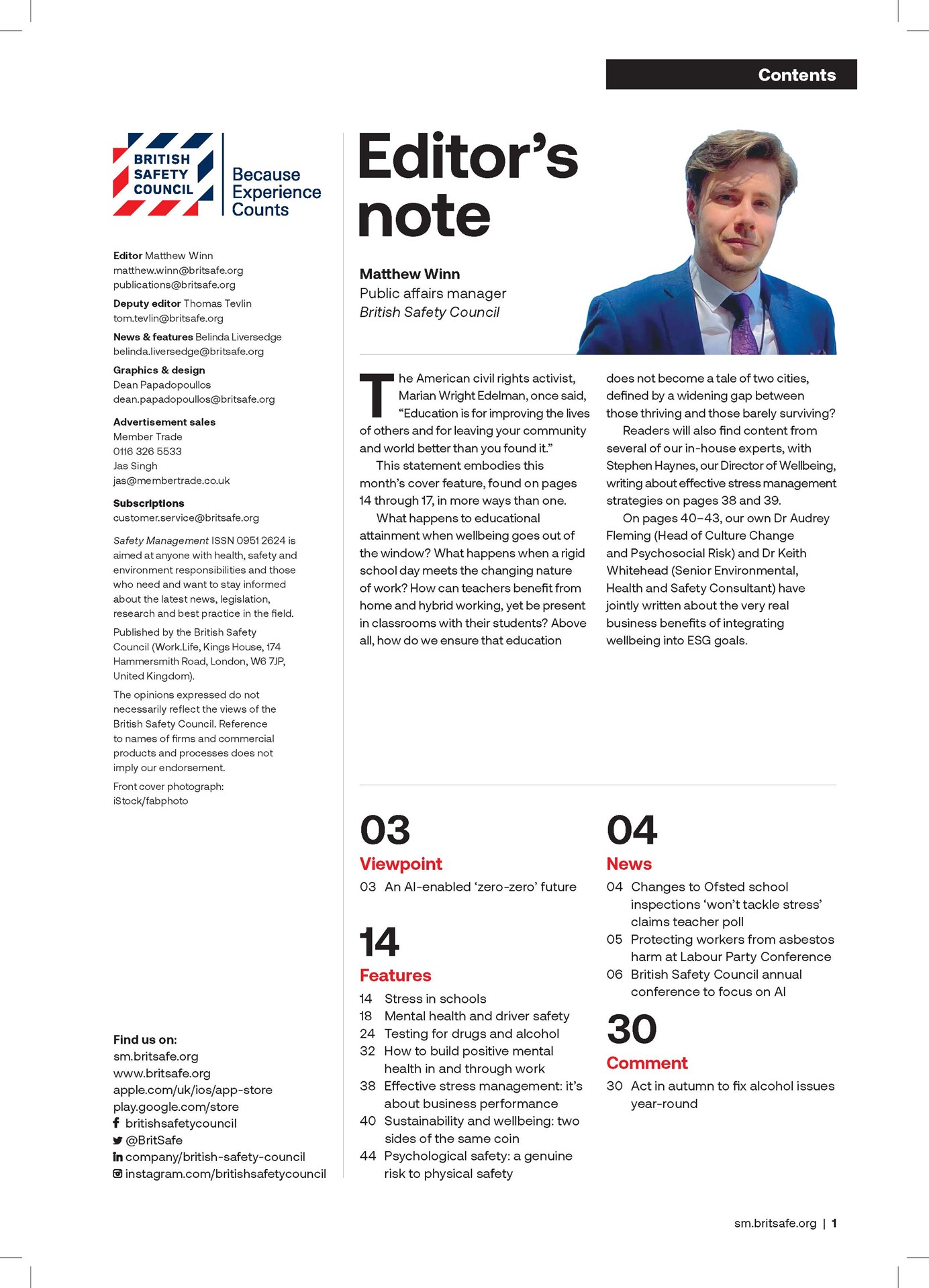Problems with the fit of some disposal filtering facepiece respirators across the variety of face shapes and facial features found in the workforce, means those who fall outside of the standard facial dimensions may not be getting full protection from respiratory risks. This has prompted one leading RPE manufacturer to develop a new design that provides a good fit for a wider range of different face shapes and sizes, keeping more people safe in the workplace.
Features
RPE: the significance of inclusivity in respiratory protection
Providing respiratory protection equipment (RPE) for employees is a well-recognised and generally well-understood requirement for employers to comply with the Health and Safety at Work Act 1974 and the Management of Health and Safety at Work Regulations 1999. Supplying equipment which truly fits – such as Filtering Face Piece (FFP) disposable masks which provide critical respiratory protection from solid or liquid particles, including dusts, mists and fumes, is a more complex area, however.
 Photograph: Draeger Safety UK
Photograph: Draeger Safety UK
One of the reasons for this is the increasing diversity of colleagues in workforces, which is leading to greater representation across age, ethnicities and religions. Despite this evolution, protective equipment design is largely unchanged.
Historically, respirator mask certification has been based on standardised adult head shape panels, using a model developed in the 1960s from studying white male military personnel in the US Airforce. This approach provided very little accommodation for those who fall outside of these specifications. However, facial dimensions vary significantly between genders, ethnicities and with age, as well on an individual basis.
Today, in the UK, BSI standards for RPE are based on the 50th percentile of four dimensions – face length, face width, face depth and mouth width, originally of the adult white male face shape, but more recently a more ethnically diverse sample group has been used.
However, the differences in face shapes and the resulting relationship with fit come into particularly sharp focus when it comes to RPE, such as FFP disposable masks, which provide critical respiratory protection from solid or liquid particles, including dusts, mists and fumes, and which require a tight seal to the face. This type of protection is vital across a wide range of applications and industries, including manufacturing, construction, pharmaceuticals and healthcare.
To focus on healthcare as an example, the NHS is the largest employer in the UK¹, and also one of largest employers globally. The King’s Fund² estimates that nearly three-quarters of the NHS’s employees (74 per cent) are women and nearly a third (31 per cent) are from an Asian background. Both of these groups are – on average – genetically inclined to be smaller-framed than the average white male. A study carried out in NHS hospitals³ in 2023 involving 5,604 healthcare workers concluded that female and non-white ethnicities were less likely to have a successful respirator fitting, while male and white ethnicity healthcare workers were most likely to achieve RPE fit test success.
While this is perhaps not wholly surprising, it is concerning, and illustrates that a standard design FFP mask will typically not accommodate the variety of face shapes and facial features present across industries in the UK. And while not all of these industries will have the significant diversity present in the NHS, the fit of respiratory protection needs to be suitable for all face shapes to keep everyone safe and to accommodate the ever-changing dynamics of those who make up the workforce as a whole.
Adequate and suitable?
The Health and Safety Executive (HSE) states that there are two key questions which are essential when specifying RPE. The first, which is usually given greater focus, is the question: ‘Is the equipment adequate? Is it appropriate for the hazard and does it reduce exposure to the level needed to protect the health of the worker?’ However, the second question is equally important – ‘Is the equipment suitable for the wearer, the task and the environment?’ This can be more challenging as it includes the suitability for an individual.
 Ian Kelsall is technical specialist, Respiratory Protection Equipment (RPE) at Draeger Safety UK. Photograph: Draeger Safety UK
Ian Kelsall is technical specialist, Respiratory Protection Equipment (RPE) at Draeger Safety UK. Photograph: Draeger Safety UK
Employers are legally required to carry out fit testing for all their employees who wear tight-fitting respirators, and to find a mask that will fit and is suitable for every individual. This is where problems arise.
Fit is clearly an essential component to ensure safety across all workplace environments, but when it comes to respiratory protection, the safety of the workforce can also be affected by employees not complying with wearing the equipment. Once again fit is also relevant here, as poor fitting respiratory equipment will be uncomfortable, or the mask simply ‘won’t feel right’ and therefore workers may wear the RPE incorrectly, or not at all.
When it comes to the fit of a mask, design plays a crucial role and is key to creating RPE that meets the changing requirements of today’s diverse workforce. By understanding the needs of different workers, designers can create PPE that is both functional and comfortable (i.e. adequate and suitable). It is therefore important to consider factors such as fit, weight and breathability of the mask, as well as the specific hazards that workers may face.
As a leading global manufacturer of RPE, Dräger has wide-ranging experience across a broad portfolio of air purifying respirators – from FFP masks to Powered Air Purifying Respiratory Protection (PAPR).
When it came to developing Dräger’s FFP3 1930, a high-performance, single-use dust mask which is used to provide protection from fine dust and particles, designing a mask which provides a good fit for as many different face shapes and sizes as possible was the priority.
Customer research was conducted with 36 customers across seven countries, benchmarking 16 products, with 50 participants in total, looking at a wide range of face shapes and sizes. The faces of the participants were mapped using a grid system, which looked at the face width, length, depth and mouth width.
Analysis of this information found that by employing an innovative design approach which focused on a pioneering three-fold model, greater flexibility in both height and width is achieved. This, combined with easy-adjustment capabilities, ensures that the mask stays in place – something which is particularly important in allowing the wearer to speak while maintaining the all-important protective seal for a perfect fit. At the same time, the use of a flexible nose clip and soft, wide nose pads enables the mask to be effectively positioned and securely sealed in the nose area. In addition, it was found that developing masks in two sizes would accommodate the majority of different face shapes and sizes, and extensive testing by Dräger showed a 96 per cent pass rate in face fit test procedures using this design.
Of course, a wide range of other questions also affects whether a particular mask is suitable for the individual wearer. Do they have wrinkles, moles, warts, deep cuts or scars, or struggle with a tight fit for medical reasons? Does the wearer have facial hair, or stubble? A wearer being clean shaven is essential to good mask fit. This has always – and increasingly so in recent years as beards have become more popular again – meant that specifying suitable RPE for these wearers has been a challenge.
For these groups a mask is often not an option, so a different approach is needed. In these scenarios, a PAPR would be a more appropriate solution. When fitted using a loose-fitting headpiece which covers the entire head, a PAPR negates the need for a tight fit and a face seal, allowing a wider range of workers to remain safe in the workplace. Therefore, many employers specifying RPE for a diverse workforce are turning to PAPR as a solution.
 Source: Draeger Safety UK
Source: Draeger Safety UK
Finally, once the fit and specification have been addressed, it is essential that the equipment is used correctly. Wearers must be trained on how to use masks, the importance of fitting them to their faces and getting a seal every time and education on topics such as why being clean shaven is essential. Added to this, instructions on how to store and maintain masks appropriately must be both explained by the employer and followed by the employee.
In conclusion, equipment that is functional, comfortable and suitable for the needs of the workforce, used and maintained properly, will keep those at risk of respiratory hazards safe: both from the hazards present today and from those which may be experienced in the future.
Ian Kelsall is technical specialist, Respiratory Protection Equipment (RPE) at Draeger Safety UK.
For more information visit:
Respiratory Protective Equipment (RPE) | Draeger
References
- Nuffield Trust, The NHS Workforce in Numbers, February 2024
- The King’s Fund, The NHS Workforce in a Nutshell, Saoirse Mallorie, May 2024
- Retrospective evaluation of factors affecting successful fit testing of respiratory protective equipment during the early phase of COVID-19P Worsley et al, BMJ 2023
FEATURES

AI-powered wearables: transforming workplace health and safety
By Graham Sharp, Stanley on 08 December 2025
Wearable technology powered by AI analysis is now regularly deployed to prevent safety problems like musculoskeletal injuries and collisions between forklifts and pedestrians, and future developments mean the technology looks set to make it easier to manage other safety challenges, like site evacuations.

Supporting neurodiverse employees: why standard DSE assessments fall short
By Guy Osmond and Alex Reffell, Osmond Ergonomics & Wellbeing on 08 December 2025
Display screen equipment assessments have traditionally focused on tackling the physical ergonomics of desk-based work in a bid to reduce musculoskeletal risks, but effectively supporting the wellbeing and productivity of neurodivergent workers involves a wider consideration of their cognitive, sensory, organisational and environmental needs.

Preventing drug and alcohol misuse through workplace testing
By Mark Burrup, Draeger Safety UK on 08 December 2025
Drug and alcohol testing can play a vital role in ensuring the safety of everyone at work, and simple, non-invasive testing devices are now available for fast and discreet results.



